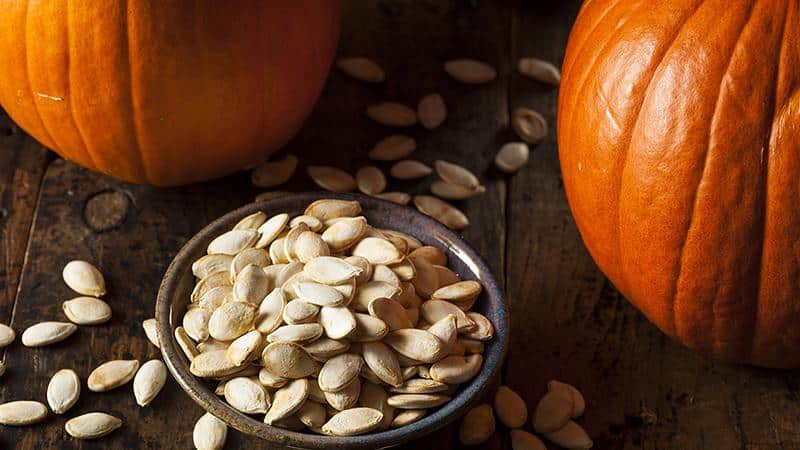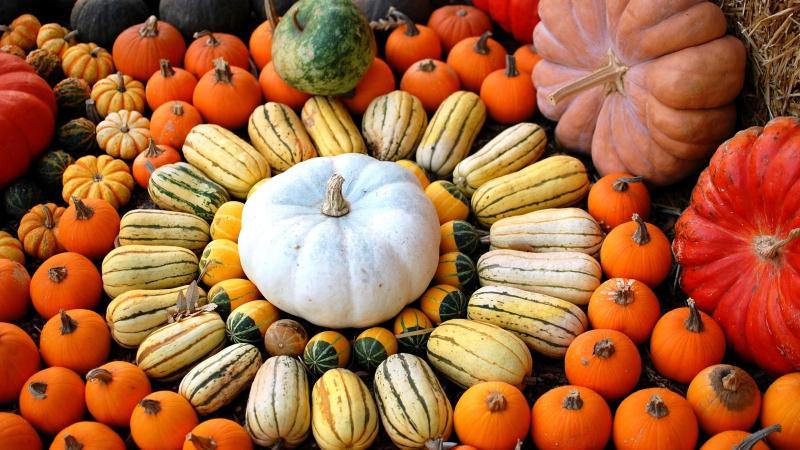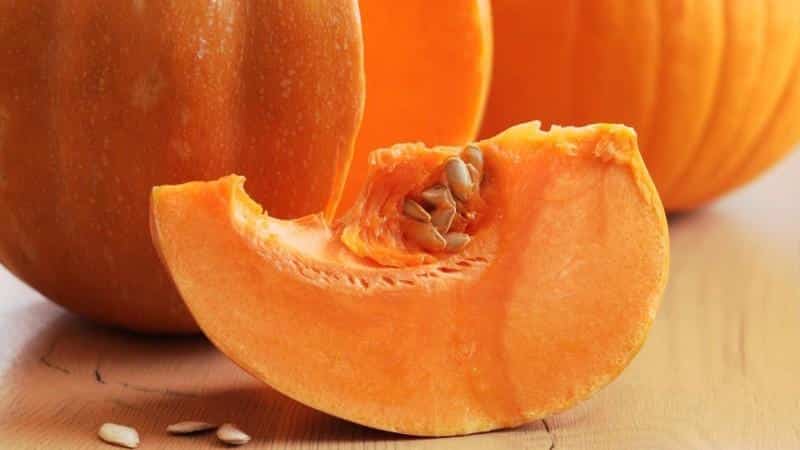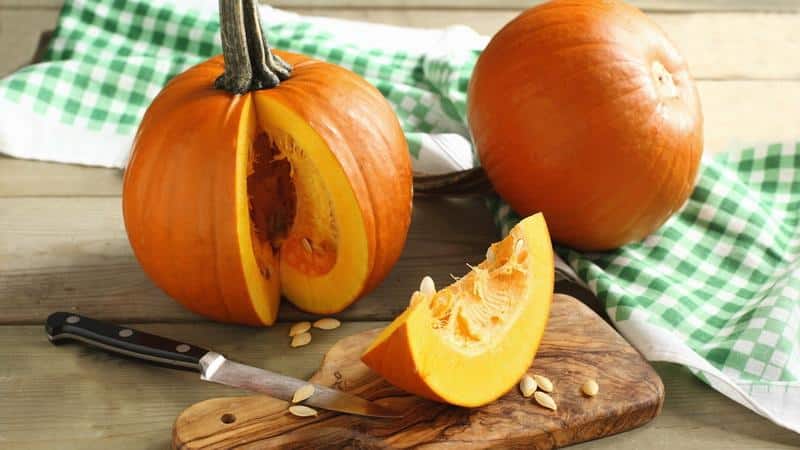The best pumpkin varieties for seeds: features of choice and nuances of cultivation
Scientists argue which country is the birthplace of pumpkins. Some say that the culture was first discovered in Latin America, while others claim that the pumpkin was originally “discovered” in Mexico. What you definitely don’t need to argue about is the benefits of the product, in particular the valuable properties of pumpkin seeds.
They represent a whole range of vitamins and minerals. Why exactly pumpkin seeds are useful for humans and which varieties of fruits contain the best of them - read on.
What are the benefits of pumpkin seeds?
Scientists have proven that seeds are much healthier than pulp. This allows them to be used in the preparation of many dishes, as well as used for treatment. In order to understand why pumpkin seeds are good for humans, let’s look at the composition of the product and its beneficial properties.
What are pumpkin seeds made of?
In total, the product contains more than 50 micro- and macroelements. Among them, the following are of particular value:
- amino acids;
- saturated fatty acids;
- pectin;
- phytosterol;
- mineral salts;
- vitamins PP;
- vitamins B, A, C;
- alimentary fiber;
- manganese;
- potassium;
- phosphorus;
- calcium;
- iron;
- zinc;
- copper;
- selenium;
- chlorine;
- iodine.
The lack of these elements leads the human body to illness and stress. Headaches, nervous tension appear, and the functioning of the cardiovascular system and gastrointestinal tract is disrupted. Plus, a person’s appearance deteriorates: circles under the eyes, wrinkles, cracks on the lips appear.
Important! 100 g of pumpkin seeds contain 541 kcal. At the same time, fat 45.8 g, protein 24.4 g, carbohydrates 20 g.

Benefits for the body
The product normalizes intestinal function. The composition contains fiber, which acts as a kind of “brush” for the intestines. It helps get rid of constipation and bloating.
Also, the seeds are an excellent medicine for the prevention of diabetes. The fact is that they contain a lot of protein, which helps normalize blood sugar levels. In addition, the product ensures normal blood clotting.
Dishes with the addition of pumpkin seeds help reduce the risk of hypertension. The effect is achieved due to arginine, which, after entering the body, dilates arteries and blood vessels, improving blood flow through them.
The seeds are also recommended for use by people who have problems sleeping: the amino acids they contain stimulate the production of the “happiness hormone,” which, in turn, has a beneficial effect on sleep.
Important! 100 g of seeds every day fully meet the body's daily needs for zinc, potassium, manganese and magnesium.
The seeds are also beneficial for a person’s appearance. Seed oil is actively used in cosmetology. It perfectly removes inflammation on the skin, heals wounds and scratches. Based on it, creams and lotions are made for the face, which rejuvenate the skin and moisturize it.
In addition, the product helps get rid of split ends of the hair, and is also an excellent tool for strengthening the roots.
Interesting. The best pumpkin seed oil is made in Austria. It is obtained from a special variety Cucurbita pepo var. Styriaca. Its seeds are especially large in size and produce many times more oil than others.Because of their special color, the oil turns out to be dark green, which is why it is called “black gold.”

The best pumpkin varieties for seeds
Some varieties are famous for their tasty and juicy pulp, others for their good yield, and others for their ease of care. There are also varieties that have the most delicious and healthy seeds. Let's take a closer look at them.
Danka Polka
This popular table variety is valued for its high yield and tasty seeds. It belongs to the mid-early variety and is grown in open ground. Pumpkins are large, one reaches a weight of about 3 kg.
One vegetable contains more than 500 large white seeds. According to reviews from gardeners, it is clear that the presence of such a number of seeds is one of the main advantages of the variety.
Olga
This is a variety that is often grown not only for personal consumption, but also for sale. The pumpkins are small and bright orange. From 1 sq.m., gardeners receive about 4 kg of harvest. The seeds are greenish, with an olive tint, without skin. Excellent for fresh consumption or after heat treatment.
Gymnosperm
One of the earliest varieties of pumpkin, appeared more than 60 years ago. The variety ripens in 100-110 days. The yield is good, one bush produces about 10 kg of vegetables. Gymnosperm produces many seeds, which have a sweetish taste and thin skin. The variety can be grown everywhere, as it is resistant to different temperatures.
Volga gray
A productive early ripening variety. Pumpkin has a light gray tint and orange flesh. The variety is unpretentious in care; if the rules of agricultural technology are observed, the yield reaches about 7-10 kg per 1 sq.m. Volga sulfur seeds are rich in vitamins E and C, which reduce the body's susceptibility to infectious diseases.
Juno
It is recommended to plant in seedlings.Vegetables are medium-sized, demanding on soil composition and fertilizing. To obtain the best harvest, it is recommended to feed the plant with nitrogen-containing fertilizers. Superphosphate and ammonium nitrate are recognized as excellent preparations.
The variety's seeds are cream-colored and may have slight pigmentation. Eating them helps remove heavy metals from the body.
Bulgarian
This variety is also called Lady's Nail. Attractive orange-red vegetables grow and are used in many dishes. For example, as an ingredient for pumpkin pie or cheesecake.
The seeds of the Bulgarian are elongated, pointed at the tip, and beige in color. The variety is planted at the end of May. It is necessary to form the plant into 1 or 2 stems, as well as pinching the top.
Ukrainian multiple
The variety is famous for its ease of care and good yield. Loves regular moderate watering. The interval between them should be 7-10 days, the water temperature should be at least 20 degrees. Has excellent immunity to diseases.
The pumpkins turn out beautiful, smooth in shape, and look like a green-yellow watermelon. The pulp is sweet, moderately meaty. The seeds are white and have no pronounced taste.
Interesting. You can make fragrant homemade bread from pumpkin seeds. It is perfect for daily and festive feasts. The bread does not require kneading dough, so it is easy to prepare. The seeds are used both as an additive and as a decoration.
Danae
Another interesting variety: round, large yellow pumpkins with bright green stripes. Danae also belongs to the gymnosperm varieties and is famous for its high seed content. They are dark, gray-green in color. There can be more than 400 of them in one pumpkin.
hundred pound
Reminds me of a Halloween pumpkin. Beautiful, bright orange, large. When growing, it may be necessary to build additional support for the vegetable, since it often grows very heavy. The seeds are white, classical in shape. Regular consumption of pulp and seeds will normalize the production of hormones in your body and help relieve stress.
Sweetie
Small pumpkins have a round shape, slightly pointed towards the tip. The variety is grown in light, spacious and well-warmed garden areas. Sweetie's seeds are delicious, bright yellow. They make excellent pumpkin butter or flour.

How to choose a variety
When choosing a variety, first focus on your needs. Determine what you want to get from your future harvest. If juicy pulp is important to you, then pay attention to the varieties Pearl And Pink banana. If the presence of pumpkin seeds plays a key role, then take a closer look at the Gymnosperm and Danka Polka pumpkins.
Important! Remember that some varieties are only suitable for fertile soils and warm climates. For example, the Vita or Golden Pear varieties will give the best harvest in the south of the country, and the Bolgarka and Ulybka varieties will produce the best harvest in the Urals and Siberia.
Also pay attention to whether the variety requires care. There are pumpkins for which it is not necessary to apply mineral and organic fertilizers to grow them.
For example, the Gymnosperm variety shows good results with minimal care. This is especially true for those gardeners who are busy at work and cannot devote much time to caring for the plant.
So, when choosing a pumpkin variety, focus on the following criteria:
- what do you want to get from the harvest;
- how much time will you devote to growing;
- what region do you live in?
- how do you plan to use the pumpkin?
- shelf life of vegetables;
- his immunity to disease.

Features of growing pumpkin for seeds
First of all, prepare the right material for planting. To do this, purchased seeds need to be disinfected. They do this by heating in the sun: spread the seeds for a week on the street or balcony - the sun's rays will destroy dangerous microbes on the surface of the seeds. The procedure will also increase the overall germination of the plant.
It is best to grow pumpkin for seeds using seedlings. To do this, plant the seeds in flower pots, having previously prepared the soil and container. Next, the seedlings should be properly cared for: watered, fertilized and maintained at temperature.
Plant seedlings in clean, prepared beds. It is better that the area was treated with a solution of potassium permanganate beforehand.
Important! Excellent predecessors for planting pumpkins - legumes, onions or garlic, as well as cauliflower and cabbage. Do not plant the crop after zucchini or cucumbers.
For irrigation, experienced farmers advise using a drip system. It ensures that water gets directly under the root, bypassing the stem. Pumpkin does not like a lot of water, so it is recommended to water it every 7-10 days. Along with watering, apply organic and mineral fertilizers.
For example, an excellent tool for strengthening the plant’s immunity is “Kornevin” or “Solution”. Among organic preparations, urea, liquid manure, ash solution, and yeast are recommended.
Also, do not forget about caring for the lashes. They often grow long and powerful. It is necessary to untangle them and carefully lay them on the ground, sprinkling earth on top.If this is not done, they will slow down the development of the bush and block the sun.

Growing pumpkin for seeds as a business
Because pumpkin seeds They have a lot of useful properties; many gardeners try to grow them not only for themselves, but also for sale. Thus, your favorite hobby turns into a profitable business.
In order for your beds to generate income, you should pay attention to the following important nuances:
- costs for the purchase of planting material;
- preparation of the site, seeds and equipment;
- costs of caring for the crop (both physical and material);
- harvesting, washing and drying the crop;
- sale to consumer.
Important! If you want to grow seeds on an industrial scale, then do not forget about expenses such as renting a field, equipment, labor and purchasing fertilizers.
In many ways, the success of an enterprise depends on the correctly selected variety. For example, high-yielding varieties produce about two tons of seeds per hectare. These pumpkins include Ukrainian multifruit, Bulgarian and Kherson watermelon. If you choose Shrovetide varieties, they are more expensive, but their yield is much lower. From 1 hectare only about 800 kg of crop is harvested.
Conclusion
Pumpkin is rich in not only juicy pulp, but also healthy seeds. Eating them helps to avoid many diseases and is also an excellent prevention of pathologies. It is better to peel pumpkin seeds by hand to avoid damaging tooth enamel and introducing bacteria into the oral cavity. The product is used in soups, side dishes and salads.
If you want to grow pumpkin for seeds, pay attention to the following varieties: Danka Polka, Bulgarian, Gymnosperm.They will give the best harvest without requiring daily care.
I want to buy pumpkin seeds to produce seeds for large hectares. Advice and agricultural technology, etc., everything for this business.